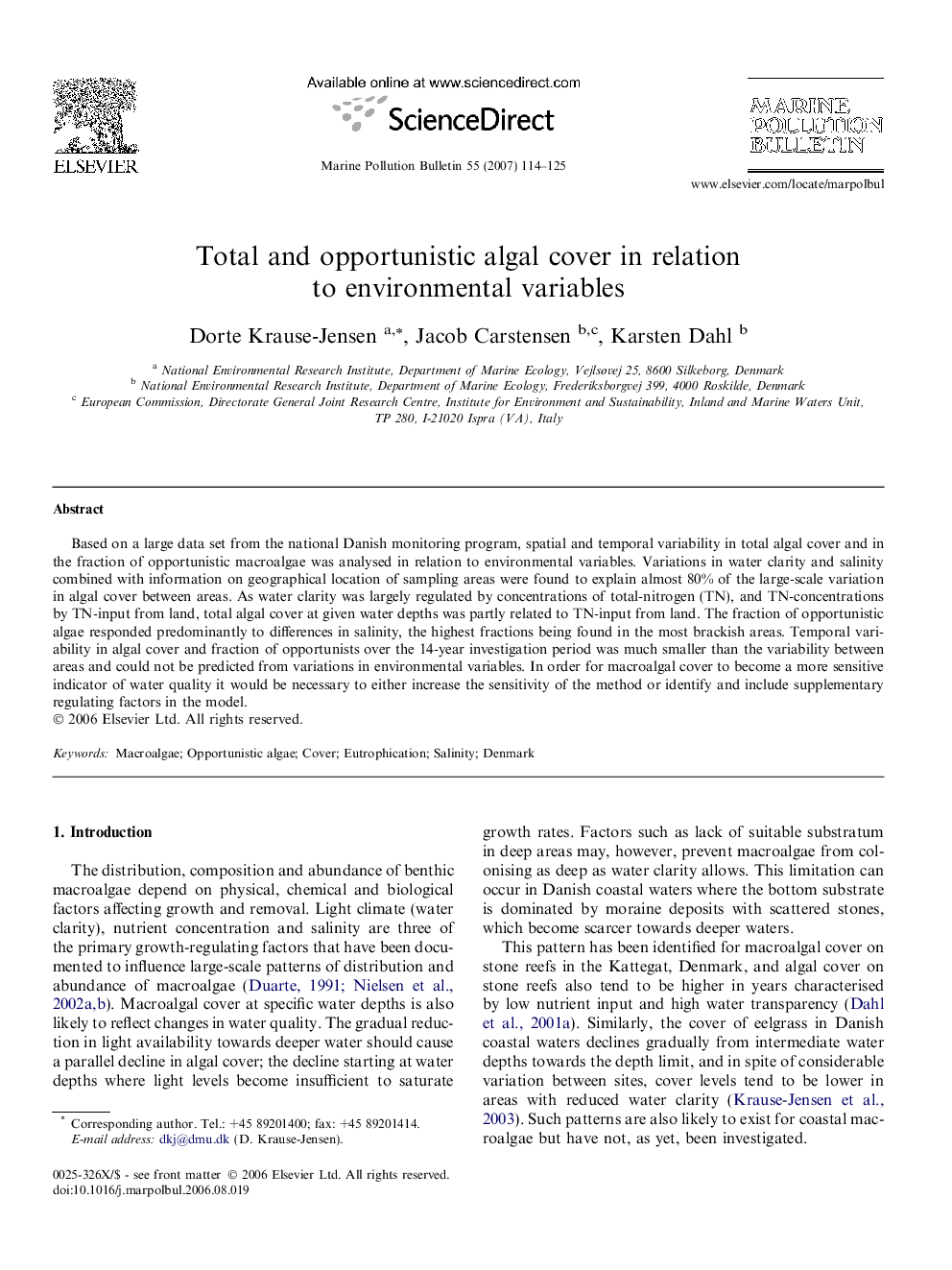| Article ID | Journal | Published Year | Pages | File Type |
|---|---|---|---|---|
| 4477322 | Marine Pollution Bulletin | 2007 | 12 Pages |
Based on a large data set from the national Danish monitoring program, spatial and temporal variability in total algal cover and in the fraction of opportunistic macroalgae was analysed in relation to environmental variables. Variations in water clarity and salinity combined with information on geographical location of sampling areas were found to explain almost 80% of the large-scale variation in algal cover between areas. As water clarity was largely regulated by concentrations of total-nitrogen (TN), and TN-concentrations by TN-input from land, total algal cover at given water depths was partly related to TN-input from land. The fraction of opportunistic algae responded predominantly to differences in salinity, the highest fractions being found in the most brackish areas. Temporal variability in algal cover and fraction of opportunists over the 14-year investigation period was much smaller than the variability between areas and could not be predicted from variations in environmental variables. In order for macroalgal cover to become a more sensitive indicator of water quality it would be necessary to either increase the sensitivity of the method or identify and include supplementary regulating factors in the model.
